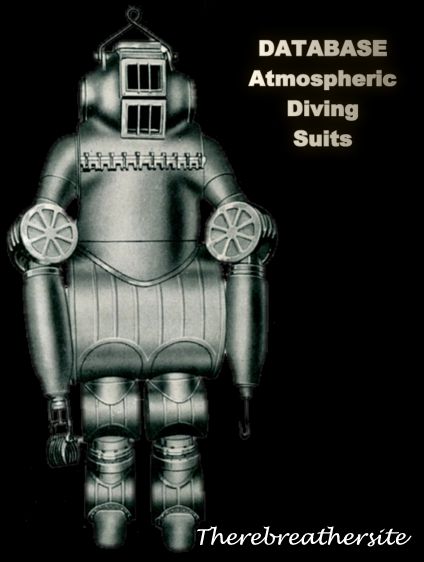
I have not been able to find much information about this copper diving suit. It is on display in the Estonian Maritime Museum with the text that the suit was made by L. Vain in 1920 and has never been used.
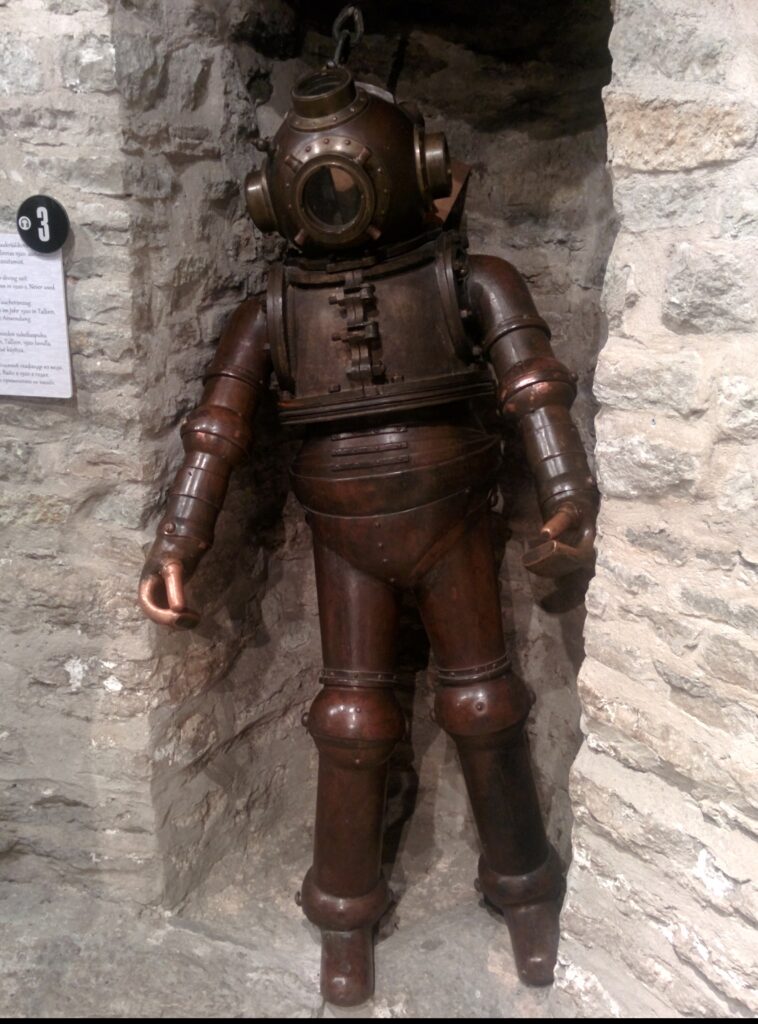

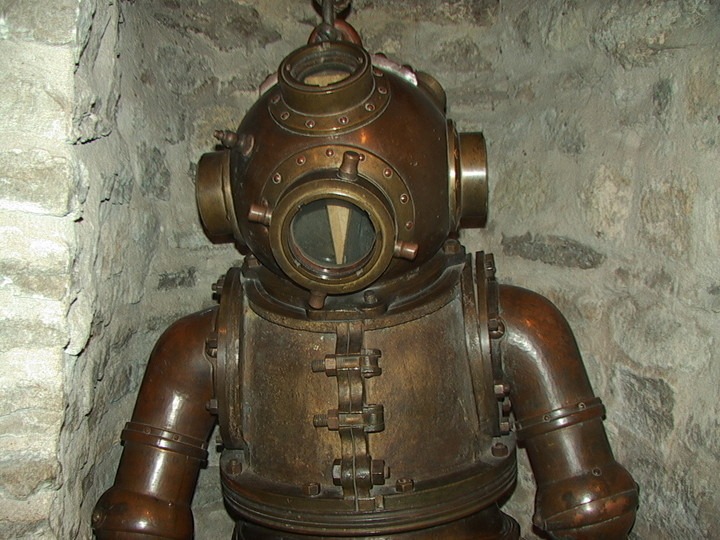
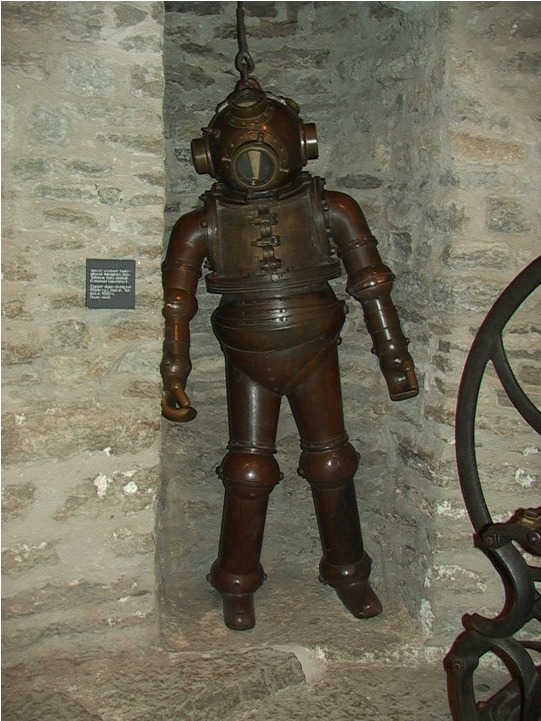
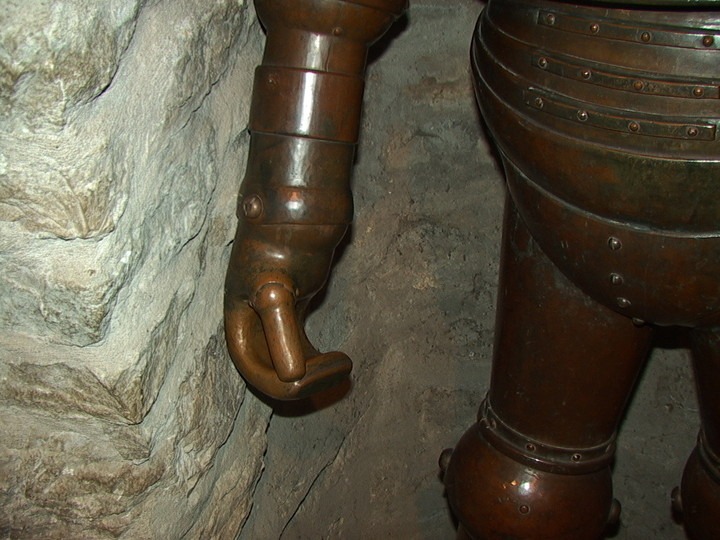
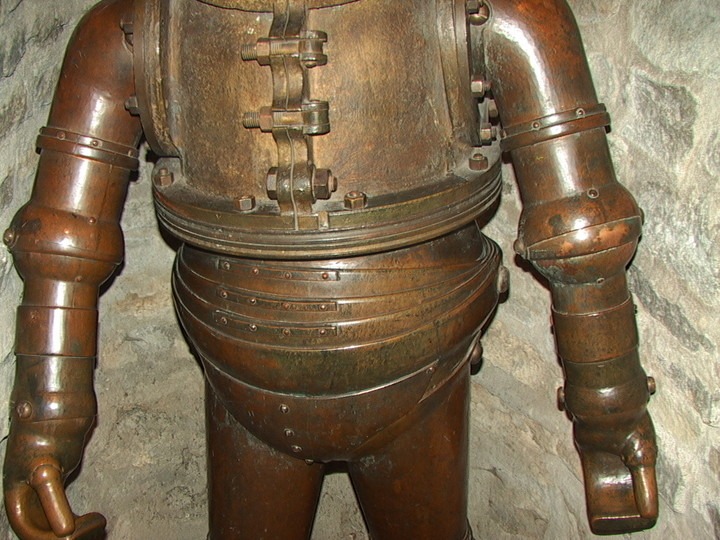
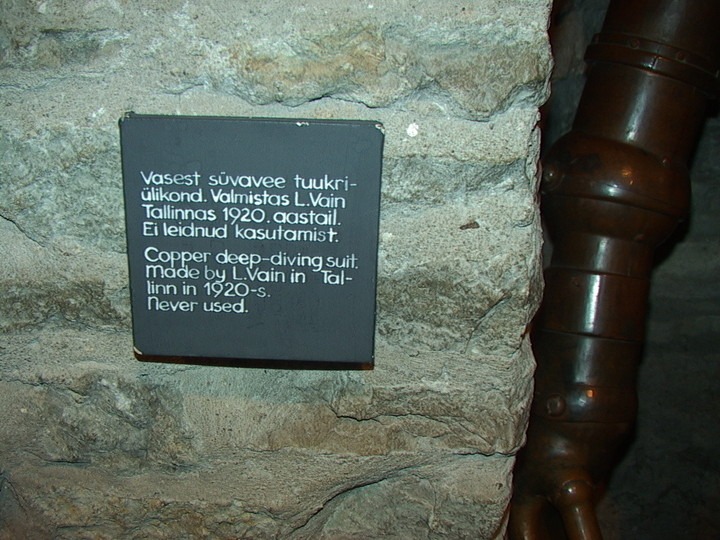
I recently received a very interesting email from Richard Walsby who has visited this museum and also conducted further research on the origins of this particular diving suit. His findings are chronicled below and are a very welcome addition to the history of this particular suit. My thanks to Richard for sharing this information!
THE TALLINN DIVING SUIT.
In 2004 a photo of this diving suit was published in the Historical Diving Times, No. 33, page 28. It had been sent in by Graham Hullett who had seen it while on a trip to Tallinn, Estonia. The accompanying sign stated it was a “Copper deep-diving suit made by L Vain in Tallinn in the 1920s – never used”. In July 2015, another photo of it appeared on the Society’s Facebook page. The caption said it had been spotted recently by a friend of a friend in Estonia and did anybody know any details? (A third such photo from Jean Nicholson on a visit to Estonia has again appeared on the Facebook page on December 8th 2015 accompanied by the museum label as above.)
My wife and I had already booked a trip around the Baltic States for late August 2015 and it was easy to arrange a visit to the Estonian Maritime Museum in Tallinn to see the copper diving suit. I was unable to get any further information at the time but, on my return, I made some email enquiries and Feliks Gornischeff, Curator in the Collections Department at the Museum, has kindly supplied the following details:
- The suit was constructed in 1920-1921 in the State Shipyard in Tallinn. It was designed by a professional diver named J Vaimel ( not L Vain as shown in the sign above) and ordered by the salvage company Poseidon.
- The suit was made from copper and weighed 240 kg. The idea was to cover it with rubber and/or leather to seal it from water entry. The shoes would have a tin sole to keep the body in balance. It was originally believed the diver‘s air was supplied from the surface by hoses leading into the rear of the helmet but the discovery of a passage in a contemporary diver’s handbook (Tuukri Käsiraamat I, by A Trelberg, Tallinn 1927), has since revealed that the diver was supposed to breathe from a steel balloon filled with oxygen, enough for 2 hours of diving. The exhaled air went into another tank next to the balloon.
- During testing, on 27th May 1921, the joints proved to be very stiff at depth and it was not possible to walk, kneel or move the hands under water. During the next test, this time unmanned (the story goes that not even the constructor was brave enough to dive in it!), the suit was taken to 31 fathoms (186 feet) but the suit broke; the screw bolts at the hip joint failed allowing water to enter. After these unsuccessful tests the suit was not used again.
It is unclear from this, whether the oxygen the diver breathed was scrubbed of its exhaled carbon dioxide in the second tank but no more details are available.
This is not the only diving suit in the Tallinn Maritime Museum, there is a fine Draeger Continental pattern diving suit and two hand-operated Draeger diving pumps; a 3-cylinder operated by a hand-wheel, the other a twin-cylinder worked by levers.
The museum itself is in a restored bastion guarding the old sea gate to the town. It is familiarly known as Paks Margareeta (ie Fat Margaret – not to be confused with Pikk Hermann or Tall Hermann, a castle watch tower on a hilltop in the centre of the Old Town). Not far away is the Seaplane Harbour housed in a building which was itself remarkable architecturally, being at one time the largest building constructed from reinforced concrete in Europe. Today it houses the larger exhibits such as a full-size submarine, the Lembit. Built in Britain for the Estonian Navy in 1936, it remained in service for 75 years. There is also a full size replica of a Shorts Model 136 seaplane also supplied to Estonia between the two World Wars. Outside is a collection of historic ships.

Therebreathersite was founded by Jan Willem Bech in 1999. After a diving career of many years, he decided to start technical diving in 1999. He immediately noticed that at that time there was almost no website that contained the history of closed breathing systems. The start for the website led to a huge collection that offered about 1,300 pages of information until 2019. In 2019, a fresh start was made with the website now freely available online for everyone. Therebreathersite is a source of information for divers, researchers, technicians and students. I hope you enjoy browsing the content!
